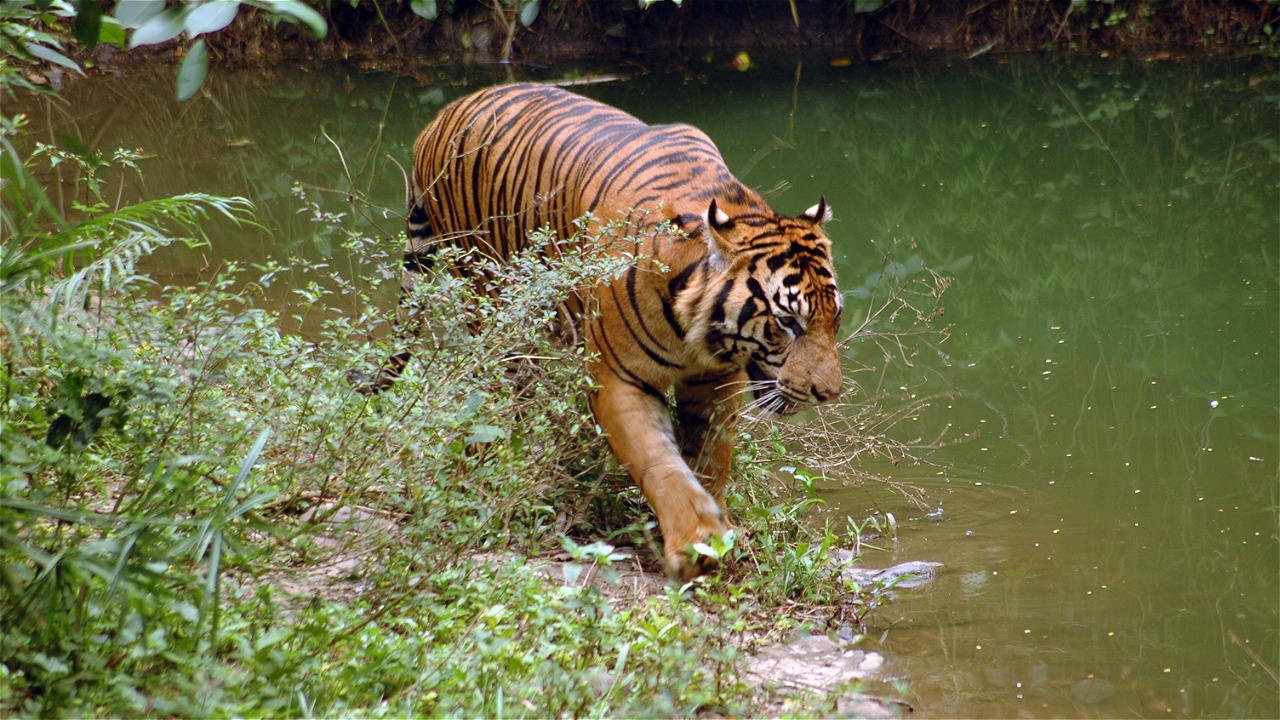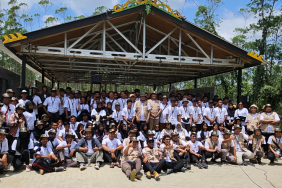INVITING MILLENNIALS TO CARE ABOUT SUMATRAN TIGERS
By: Sela Ola Olangi Barus
Efforts to protect protected animals such as the Sumatran Tiger need the support of all groups, including the younger generation. The discussion on integration between various parties to save the Sumatran Tiger was carried out in the form of a Public Dialogue entitled "Integrated Protection for Sumatran Tiger Conservation" on Wednesday (2/8) at @america, Pacific Place, Jakarta. This public dialogue is open to the public and specifically invites students to attend this event. The goal is to raise awareness and invite active participation of the participants, especially the younger generation in Sumatran Tiger conservation efforts.
The hope was conveyed by Ms. Indra Exploitasia, Director of Forest Prevention and Security (DG Gakkum LHK) in her speech. She expects the active role of the younger generation to spread information about the efficacy of tiger body parts is a myth. In addition, she invited them to report to the authorities when they find out about illegal wildlife trade, and to love wildlife in their habitat. Rizal Malik, CEO of WWF-Indonesia, added that the role of the community in tackling protected wildlife trade can be done by reducing the demand for tiger products.
Various competent speakers were presented in this Public Dialogue, such as Tisna Nando (Wildlife Conservation Society-Indonesia), Krismanko Padang (Forum Harimau Kita), and Sunarto (WWF-Indonesia). The dialogue, hosted by Bayu Dwi Mardana, former Managing Editor of National Geographic Indonesia, began with the presentation of data and facts related to the Sumatran Tiger, followed by a question and answer session.
Sumatran Tiger Rescue Efforts
WCS-Indonesia concentrates on human-wildlife conflict management, one of which is the Sumatran Tiger. Tisna Nando said that most of the incidents stem from human-tiger conflicts. Tigers that are considered detrimental to local communities are captured with snares and the catch is sold. WCS-Indonesia's efforts in overcoming human-tiger conflicts are to form a Wildlife Response Unit team and build anti-tiger attack fences for communities to install around conservation areas.
In contrast to WCS-Indonesia, Krismanko Padang, who is also part of Gakkum LHK, shared some facts related to the Sumatran Tiger trade case. He explained that many of the perpetrators of protected wildlife trade are state officials. According to him, the high price of protected animals on the black market has caused this illegal practice to continue. In addition, the relatively light punishment for the perpetrators further increases the rampant trade in protected animals. One of the protection efforts made by KLHK is by creating the GAKKUM application to report all forms of protected wildlife trade through smartphones.
The last presentation was delivered by Sunarto, an ecologist at WWF-Indonesia. Sunarto said that the condition of tigers in the world at that time (2010, in 2016 the total population amounted to 3890) only amounted to approximately 3,200, which was not safe for the preservation of tigers because they would become extinct by themselves without poaching and illegal trade.
Therefore, it is necessary to save the tiger by doubling its population through a program entitled "TX2". The target is to double the number of tigers in the world by 2022. The year was chosen because it coincides with the year of the tiger in the Chinese Calendar. Regarding conservation efforts, Sunarto said that if the amount of food for Sumatran tigers is increased, their range can be minimized. Not only that, Sumatran tigers need forests so that they can carry out predation. That way, human-tiger conflicts can be minimized.
In protecting the existence of Sumatran tigers, integrated efforts are needed. "We have IMBAU program which is an integrated program and partnership with several institutions. One of the (activities) is monitoring tiger activities and biodiversity with camera traps," said Sunarto. He also added that it is not only law enforcers who play a role in protecting Sumatran tigers, everyone can contribute.
At the end of his presentation, Sunarto said that stopping Sumatran Tiger poaching is not only done in the forest, but can also be done from the city. As a young generation, the easiest way is to voice out on various social media if you find protected wildlife trade practices. If there is a violation of protected animals, spread the word through social media. The more millennials who speak out to preserve the Sumatran tiger, the more Indonesians and even the world will become aware of the importance of conservation of these cats for the natural ecosystem.





